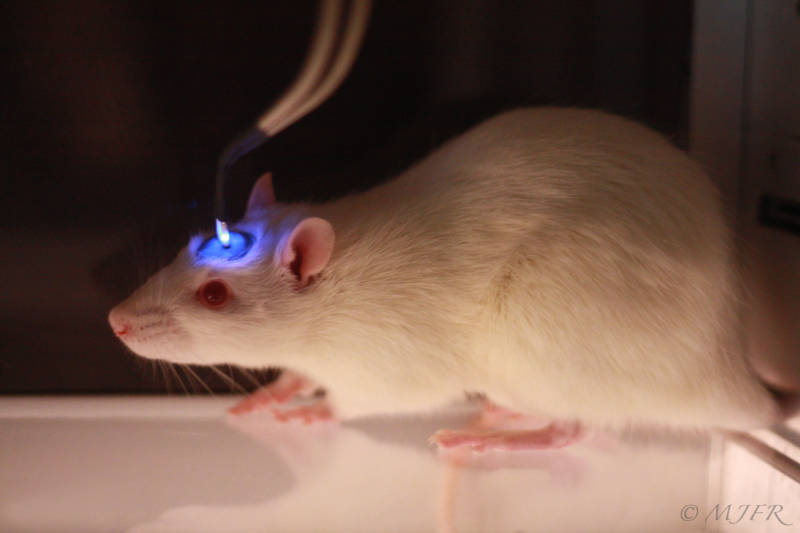In her lab at the University of Toronto, Josselyn and colleagues probe the architecture of memories by looking into the amygdalas of mice. This region of the brain plays an important role in processing the experience of fear. Frightening events spark a cascade of rapid-fire electrical and chemical communications in neurons -- nerve cells -- in the amygdala and other regions of the brain. It is those responses that help to make up the fabled engram.
In a 2009 study, Josselyn’s team showed that specific groups of neurons formed the basis of memories, which, incredibly, could be erased. Once researchers extinguished these cells (with a diphtheria toxin no less), the mice no longer froze up at the sound of a tone that they had come to associate with an electric shock, Pavlov style. The experiment brings to mind sci-fi scenarios like the one in “Eternal Sunshine of the Spotless Mind,” a film about a romantic couple who have undergone a process to erase each other from memory. This, naturally, goes awry.
But the concept of memory eradication also suggests the tantalizing possibility of cures for mental conditions like PTSD and drug addiction. In 2014, for instance, Josselyn’s team extinguished memories of cocaine highs in mice.
“Sometimes people who have had problems with drug abuse do fine in rehab, where they are removed from a lot of the cues associated with drug taking,” she told Quanta. “But when they get back in the environment where they previously took drugs, they can relapse, because they expect and crave the drugs that have become associated with these places. We tried to get at the heart of that by saying: Can we do something to weaken this cocaine memory? By just manipulating cells that we think are important, we got the animal to act is if it never had cocaine before.”
In study results published this summer, Josselyn’s lab again used Pavlovian conditioning to determine if memories of fearful events could become linked.
Mice that received an electric shock between 1.5 hours and six hours apart showed a greater degree of fear by freezing when they heard the same specific sound than other groups of mice that went 18 or 24 hours between receiving the shocks. Researchers found that the storage of fear memories in the same sets of neurons occurred only when the two events happened relatively close in time.
The researchers also affirmed that a small percentage of neurons containing a molecule called CREB are the ones involved in forming a fearful memory. Decades ago, Nobel laureate Eric Kandel found that sea slugs could remember being shocked, due to CREB, which helps form long-term memories. A former colleague of Josselyn’s at UCLA, Alcino Silva, has found similar results in rats and mice.
Asim Rashid, lead researcher on the recent study of linked memories, explains why fear-inducing events that happen closer in time had a profound effect on the mice’s fear response. Because the first shock increased CREB activity in certain neurons, these same highly active neurons were then “recruited” into the second one, thus forming memories that linked the two experiences. “When we experience these two fearful events close in time, the second event becomes enhanced or exaggerated compared to what could happen on its own,” says Rashid.
In the next part of the study, the Toronto scientists used a technique called optogenetics developed by Stanford researcher Karl Deisseroth. Researchers artificially forced the same neurons to store memories of different fearful events taking place 24 hours apart, by shining a blue light in the animals’ lateral amygdalas that activated the neurons.
Where brain research once relied on broad-brush techniques such as electrodes and tissue removal, today’s scientists use precision tools to observe and alter the inner workings of the brain. Of course, there are ethical issues involved. If we really could indeed erase memories, there is the potential for collateral damage to other linked memories. Ultimately, memory loss could affect our personalities. Targeting neurons in ailing humans may still be a ways off, but doing so would be “revolutionary,” said Josselyn. “For drug treatments, one day we won’t need to drug the entire brain, the entire body; we can have a more targeted approach to handling disorders like PTSD.”

